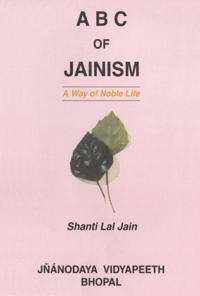LESSON 10
Bhagavāna Ṛṣabhadeva
Place of birth | Ayodhyā, India (Bharata-Kṣetra) |
Father's name | King Nabhirāya |
Mother's name | Gueen Marudevī |
Emblem (Chinha) | Bullock |
Body color | Golden |
Name of wives | Yaśasvatī and Sunandā |
Date of birth | Caitra Kṛṣṇa 9 |
Date of monk-hood | Caitra Kṛṣṇa 9 |
Date of attaining perfect knowledge (Kevala Jñāna) | Falguna Kṛṣṇa 11 |
Date of Salvation (Nirvāṇa) | Magasira Kṛṣṇa 14 |
Place of salvation (Nirvāṇa-Bhumi) | Mount Kailaśa |
Total age | Many years |
Bhagavāna Ṛṣabhadeva was the first Tīrthankara. He was born in Ayodhyā. His father was King Nābhirāya. His mother was gueen Marudevi-a pious lady. Being the first Tiīrthankara, Bhagavāna Ṛṣabhadeva is also known as Ādinātna.
At the time of conception, mother Marudevī had sixteen beautiful dreams. She was very happy and elated. Next morning, she requested King Nabhirāya to explain the meaning of the dreams. The King was very delighted. He told her that auspicious dreams indicate the conception of a world Savior and Spiritual Victor - Tīrthankara.
When Ṛṣabhadeva was born, Saudharma-Indra came and performed the "Janrnabhiṣeka". Gradually, Bhagavāna Ṛṣabhadeva attained adulthood and married Yasasvatī and Sunandā. After some time, he was made the King. He taught for the first time, the art of Asi (constructive use of sword for protecting the weak), Maṣi (Use of ink with pen and brush), Kṛṣi (Agriculture), Vidyā (Knowledge), Vānijay (Trade and Commerce) and Silpa (Art, Science and Technology). These were the basic but harmless ways to fulfill every one's primary needs for earning livelihood. So Bhagavāna Ṛṣabhadeva was also known as "Prajapati". Bharata and Bāhubalī were his famous sons. His eldest son Bharata was the first Cakravarti. Our country is known as Bharatadesa after his son Bharata. Ṛṣabhadeva had two daughters-Brahmī and Sundarī. He taught them "Brahmī-lipi" (first ancient script) and "Ank-Vidyā" (science of numbers) respectively.
One day, a celestial Apsarā-Neelanjanā died while dancing ill the court of F3~abhadeva. Seeing this, he developed the feeling of Renunciation. He left all his worldly possessions and became a nude monk (a Digambara Sadhu). In Hindu scriptures (Vedas) and several purāṇas as well, name of Ṛṣabhadeva is mentioned with reverence.
After he became monk, he did penance for number of years and attained Perfect Knowledge (Keval-Jñāna). On attaining Perfect Knowledge, he became Vītrāga - one who is beyond attachment and aversion. He rid his soul of all karmas, which are cause of anger, pride or desire. He delivered his sermons from Samavasarana (Religious assembly). His sermons were to teach all to follow the path of salvation by following non-violence, truth, non-stealing, chastity and non-attachment.
Order of his religious followers was simple and scientific. It was divided in four folds - Nude Monk (Munī). Lady monk (Āryakā), Householder (Śrāvaka) and Lady-house-holder (Śrāvikā).
Ultimately, when all his karmas were exhausted, he rid himself of his mortal body, attained Nirvāṇa and became Siddha.
Glossary
Renunciation Giving up all attachments; all desires and all worldly possessions.
Rid
Make free.
 Shanti Lal Jain
Shanti Lal Jain
